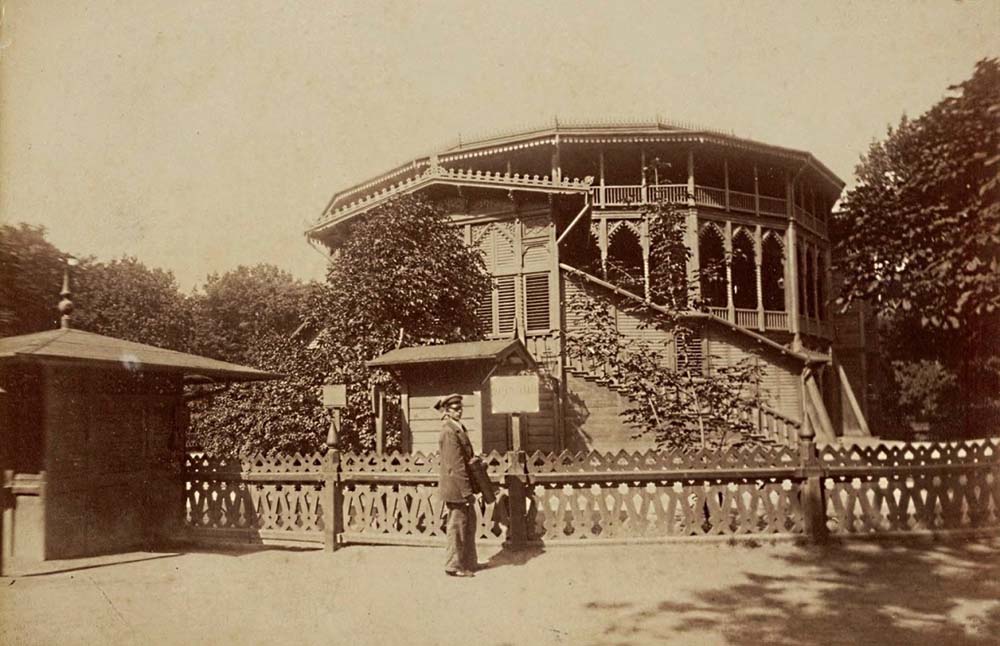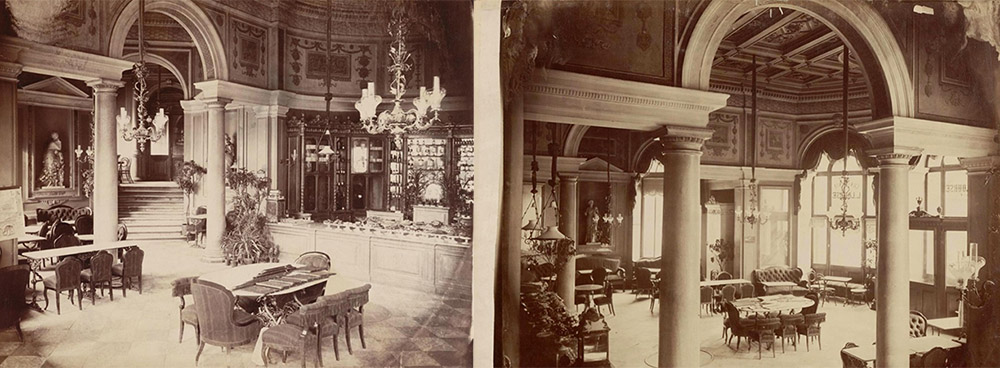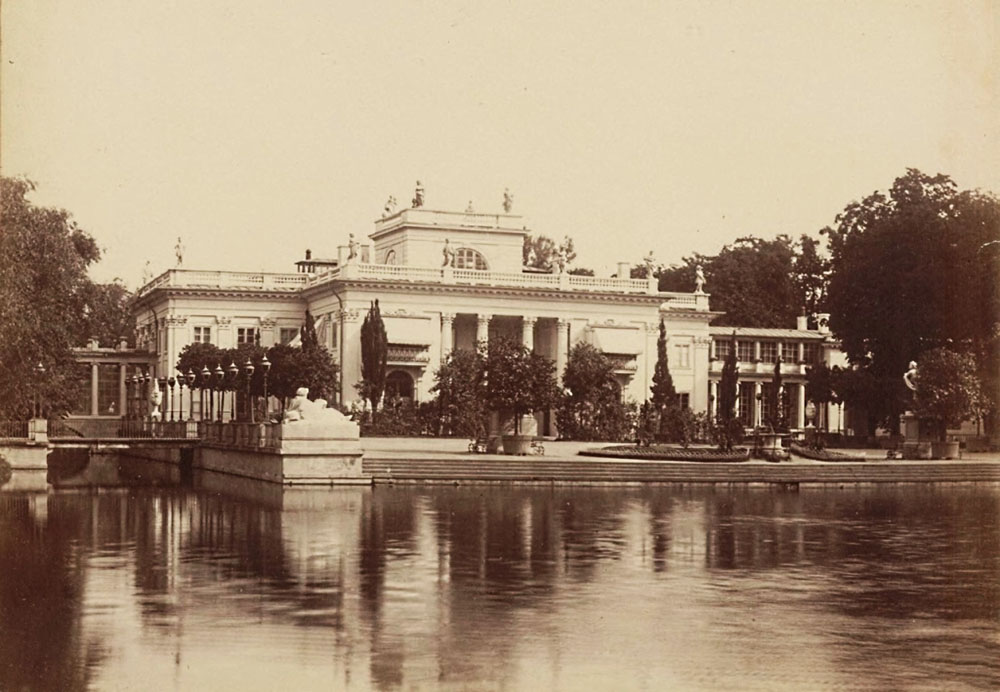Culture.pl’s selection of amazing photos from the 1870s take you on a tour of a Warsaw from before the dramatic events of the 20th century. See a Warsaw that is no more: the classy Hotel Europejski, the Royal Castle in its pre-war form and other iconic places.
Royal Castle (Zamek Królewski)
 Castle Square, 1871, photo: mbc.cyfrowemazowsze.pl
Castle Square, 1871, photo: mbc.cyfrowemazowsze.plThe Royal Castle in Warsaw, here seen from west, is among the most characteristic landmarks of the capital. The sight of its baroque-classicistic architecture opens many a visit to the city’s neighbouring Old Town, a place popular with tourists and folks looking to relax. The monument in the picture is of King Sigismund III Vasa, who made the castle his main residence in 1611, causing Warsaw to effectively substitute Kraków as the capital of Poland. Dating back to the mid 14th century, the castle was horribly devastated during World War II and later rebuilt. Part of this picture’s nostalgic appeal is that it shows the pre-war form of the castle, which is actually rather different from the present one. For example, today the western façade sports corner turrets mimicking those that used to adorn it during the reign of Sigismund III.
Jerusalem Avenue (Aleje Jerozolimskie)
 Jerusalem Avenue, 1870, photo: mbc.cyfrowemazowsze.pl
Jerusalem Avenue, 1870, photo: mbc.cyfrowemazowsze.plAbove are two photographs of Warsaw’s Jerusalem Avenue. In the middle of the left one, you can see what appears to be a man dressed in a black kapote, a traditional Jewish long-cut coat. In 19th-century Warsaw, approximately 1 in 3 people were Jewish and the street’s name reflects the influence Jews had on the capital. Before the avenue was laid out in the 1820s, it used to be a field road leading from Warsaw to a village outside of the capital called New Jerusalem. Inhabited mainly by Jewish merchants and artisans, this street’s name is a testimony to the settlement. Today’s Warsaw extends far beyond the former site of New Jerusalem and Jerusalem Avenue is one of the city’s main arteries.
Summer Theatre
 The Summer Theatre in Saxon Garden, 1870, photo: mbc.cyfrowemazowsze.pl
The Summer Theatre in Saxon Garden, 1870, photo: mbc.cyfrowemazowsze.plHere you can see what the Summer Theatre in the Saxon Garden (Ogród Saski) looked like when it was brand new. The venue opened in 1870, the very year this photo was taken. Originally the wooden structure was meant to be a temporary substitute for the nearby Grand Theatre which was undergoing renovation at the time. But, as is often the case, the short-term solution proved to be worthy of lasting longer than planned.
Capable of fitting in an audience of around a thousand people and having marvelous acoustics, the Summer Theatre proved so popular with Warsaw theatre-goers that it became a venue in its own right. Not only did it outlast its original planned stay, in the 1890s it was adapted for year-round use and kept operating until it burned down in 1939 during the war. Today, you can see a miniature of the never-rebuilt theatre at Warsaw’s Mazovian Voivodeship Miniature Park.
Jabłonowski Palace (Pałac Jabłonowskich)
 Jabłonowski Palace, exterior & interior, 1870, photo: mbc.cyfrowemazowsze.pl
Jabłonowski Palace, exterior & interior, 1870, photo: mbc.cyfrowemazowsze.plThese pictures also show a freshly-completed structure – in 1870, the Jabłonowski Palace had been rebuilt the year before. It burned down in 1863 during the January Uprising, an unsuccessful rebellion against the Russian rule over this part of Poland. A few years of reconstruction later, it had gained the neo-Renaissance look that can be seen in the photos. This form differs quite a bit from the initial one from the end the 18th century – the right wing in the distance and the tower were both new. The palace, which long served as City Hall, was destroyed once more during World War II. After that it was reconstructed as late as the 1990s, this time to a shape that strongly resembles that of the left photo. The interiors were however made modern to best accommodate office space.
Leszno Street
 Leszno Street, 1875, photo: mbc.cyfrowemazowsze.pl
Leszno Street, 1875, photo: mbc.cyfrowemazowsze.plHere you can see a section of Leszno Street which nowadays bears the name Solidarity Avenue. Most of the captured buildings aren’t there anymore – during World War II, the street was made part of the Warsaw Ghetto established by the occupying German forces. The ghetto area, including Leszno Street, was completely levelled by the Nazis before the end of the war. After that grave tragedy, only two of the structures seen in the photo were rebuilt: the 18th century Dissident House, with its characteristic tympanum, and the Church of the Nativity of the Blessed Virgin Mary standing in the distance.
When Leszno Street was being widened in the 1960s, the church had to be physically moved. Over the course of a few hours, its 6,000 tonne weight was moved back 21 metres in a neatly conducted engineering operation observed by a curious crowd of Warsaw citizens.
Hotel Europejski
 Sweet shop in Hotel Europejski, 1875; exterior of the hotel, 1878, photo: mbc.cyfrowemazowsze.pl
Sweet shop in Hotel Europejski, 1875; exterior of the hotel, 1878, photo: mbc.cyfrowemazowsze.plIt took a while to raise the elegant neo-Renaissance Hotel Europejski. Its construction lasted from 1855 to 1878, when the last part, seen in the picture on the right, was completed. After opening, it quickly gained a reputation as the most exclusive hotel in Warsaw, with one of its special advantages being the confectionary operating within (in the picture on the left).
Famous for its fancy desserts like The Count’s Bomb (a scoop of vanilla ice cream covered in frozen cream and chocolate), the confectionary eventually turned into a coffee shop frequented by noted figures including the Nobel prize in literature winner Władysław Reymont and the poet and writer Andrzej Niemojewski. The building was rebuilt after being destroyed in World War II and is currently undergoing a controversial reconstruction altering its top floors.
Łazienki Palace (Pałac Łazienkowski, Pałac na Wodzie)
 The Palace on the Water, 1870, photo: mbc.cyfrowemazowsze.pl
The Palace on the Water, 1870, photo: mbc.cyfrowemazowsze.plThe Łazienki Palace, located in the vast eponymous park in central Warsaw, is so picturesque that it looks as if it was taken out straight from a fairy tale. Its history goes back to the end of the 17th century when Baroque baths were raised on its site, a building that was later purchased by King Poniatowski and reconstructed upon his orders. The monarch began using the classicist palace as his summer residence once the work was completed in 1793.
Filled with items belonging to Poniatowski’s exceptional art collection (including paintings by Rembrandt), the palace was intended by the king to someday become a public museum. Sadly, due to the partition of Poland by Russia, Prussia and Austro-Hungary, he didn’t get the chance to realise that plan. Even though it was plundered during World War II, and narrowly escaped demolition by the Germans, the Łazienki Palace has survived. Today it looks much like it does in the picture thanks to a recent renovation that restored much of the building’s old glory.
Author: Marek Kępa, Jan 2017